19Mar
Lesson Plan > Lesson 26 > Science
Elementary Level: Seasonal Changes and Animal Behavior
Mid Level: Biodiversity and Its Importance
High Level: Ecosystems and Biomes
Elementary Level (Kinder to Grade 2)
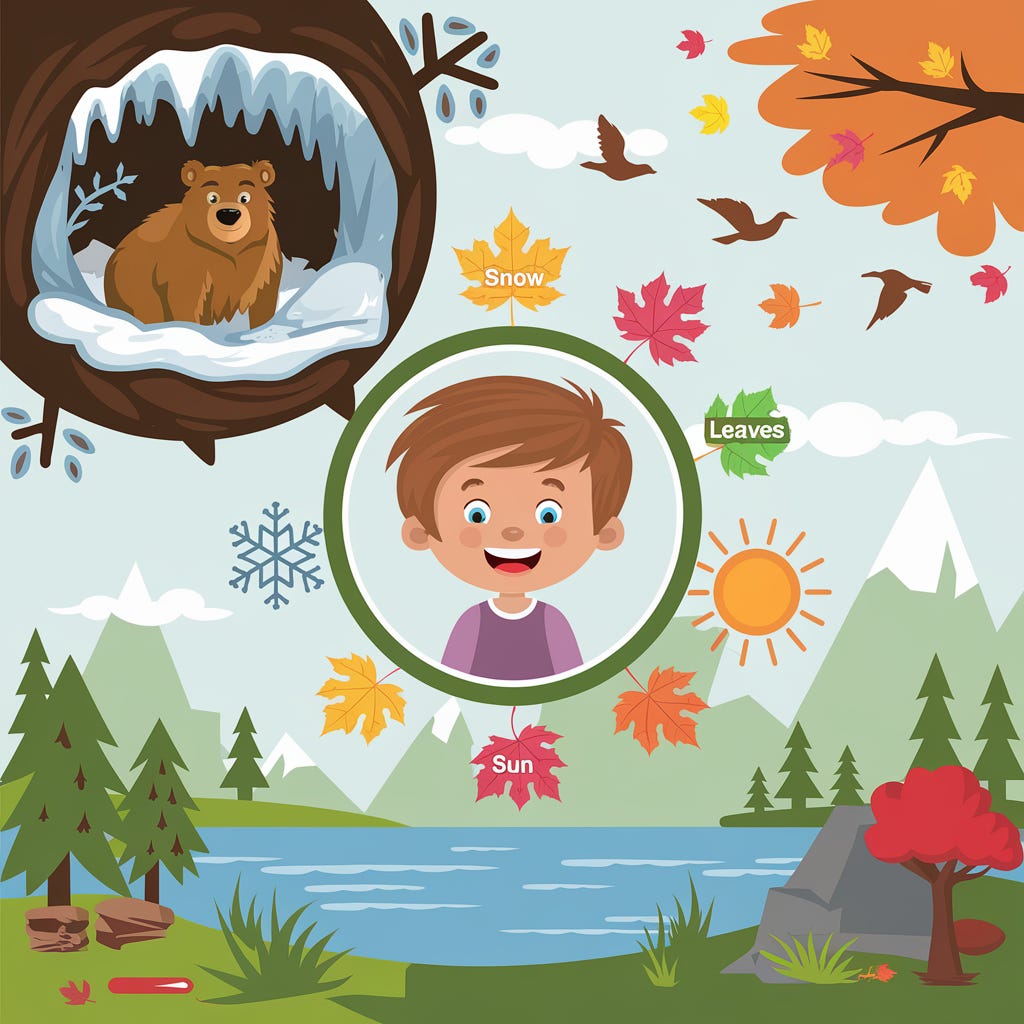
Subject: Seasonal Changes and Animal Behavior
Alignment with Standards:
- Next Generation Science Standards (NGSS):
- 1-LS1-2: Read texts and use media to determine patterns in behavior of parents and offspring that help offspring survive (links to seasonal adaptations).
- K-ESS2-1: Use and share observations of local weather conditions to describe patterns over time (extends to seasonal changes affecting animals).
- Common Core State Standards (CCSS):
- CCSS.ELA-LITERACY.RI.1.3: Describe the connection between two individuals, events, ideas, or pieces of information in a text (e.g., seasons and animal behavior).
- CCSS.ELA-LITERACY.SL.1.2: Ask and answer questions about key details in a text read aloud or information presented orally or through other media.
Objectives
- Understand that seasons change throughout the year and affect animal behavior.
- Learn how animals adapt to seasonal changes through hibernation and migration.
- Explore animal adaptations using stories or videos and discuss their importance.
- Build observation, listening, and speaking skills through interactive discussions.
Materials
- Picture book about seasons/animals (e.g., The Busy Little Squirrel by Nancy Tafuri or Bear Snores On by Karma Wilson)
- Short video clips (e.g., YouTube Kids: “Hibernation,” “Migration,” or National Geographic Kids)
- Paper or notebook for drawing
- Crayons, markers, or pencils
- Animal pictures or toys (e.g., bear, bird, squirrel)
- Seasonal props: cotton balls (snow), yellow paper (sun), leaves
- Optional: Calendar, globe (to show seasons)
Activities
Day 1: Introduction to Seasons and Animal Changes (30-45 minutes)
- Warm-Up (5-10 minutes):
- Ask: “What’s your favorite season? What’s it like outside then?”
- Say: “Seasons change, and animals change too—let’s find out how!”
- Direct Instruction (10 minutes):
- Explain: “We have four seasons: spring, summer, fall, winter. Animals do special things to live in them!”
- Hibernation: Sleeping through winter (e.g., bears sleep when it’s cold, no food).
- Migration: Moving to a new place (e.g., birds fly south for warm weather).
- Show props: “Cotton is winter—bears sleep. Sun is summer—birds come back!”
- Explain: “We have four seasons: spring, summer, fall, winter. Animals do special things to live in them!”
- Discussion (15 minutes):
- Read a story (e.g., Bear Snores On): “Why does Bear sleep? (Winter—no food!)”
- Ask: “What animals do you see in summer? Winter?”
- Wrap-Up (5 minutes):
- Say: “Next time, we’ll watch animals move and sleep!”
Day 2: Stories and Videos on Adaptations (45 minutes)
- Review (10 minutes):
- Recap: “What’s hibernation? (Sleeping in winter) Migration? (Moving away)”
- Quick game: “Bear—hibernate or migrate? (Hibernate!) Bird?” (Migrate!)
- Hands-On Activity: Story and Video (25 minutes):
- Read The Busy Little Squirrel: “What’s Squirrel doing in fall? (Getting ready for winter!) Does he sleep or move?”
- Watch a video (e.g., “Why Do Birds Migrate?”—3-5 min): “Where do they go? Why?” (Warm places, food!)
- Act it out: “I’m a bear—hibernate!” (curl up), “I’m a bird—migrate!” (flap arms).
- Draw: “Pick an animal. Show its season trick!” (e.g., bear in a cave).
- Wrap-Up (10 minutes):
- Ask: “Why do animals hibernate? Migrate? Which trick do you like best?”
Day 3: Deepening Understanding (45 minutes)
- Warm-Up (10 minutes):
- Say: “Show me hibernation! (curl up) Migration! (flap)”
- Ask: “What season is it now? What might animals do?”
- Hands-On Activity: Discussion and Creation (25 minutes):
- Discuss: “Why does a bear sleep all winter? (No food, cold!) Why do birds fly away? (Find sun, bugs!)”
- Video clip (e.g., “Hibernation Explained”): “What else hibernates? (Frogs, bats!)”
- Make a mini-book: Fold paper, draw 2 pages:
- “Winter: Bear hibernates” (cave, snow).
- “Fall: Bird migrates” (flying, sun).
- Share: “Tell me about your animal!”
- Wrap-Up (10 minutes):
- Celebrate: “You’re animal experts! What’s one season change you’d do?”
Assessment
- Informal Observation: Note their understanding during discussions and acting.
- Drawing/Book: Check for an animal with a correct adaptation (e.g., bear hibernating).
- Questions: Ask: “Why does a bird migrate? What’s hibernation?” (Expect basic answers like “to find food,” “sleep in winter”).
Extensions
- Season walk: Look outside—“What animals might be here now?”
- Animal charades: Act out hibernate/migrate, guess the animal.
- Add seasons: “What do animals do in spring? (Wake up, have babies!)”
Mid Level (Grade 3 to 5)
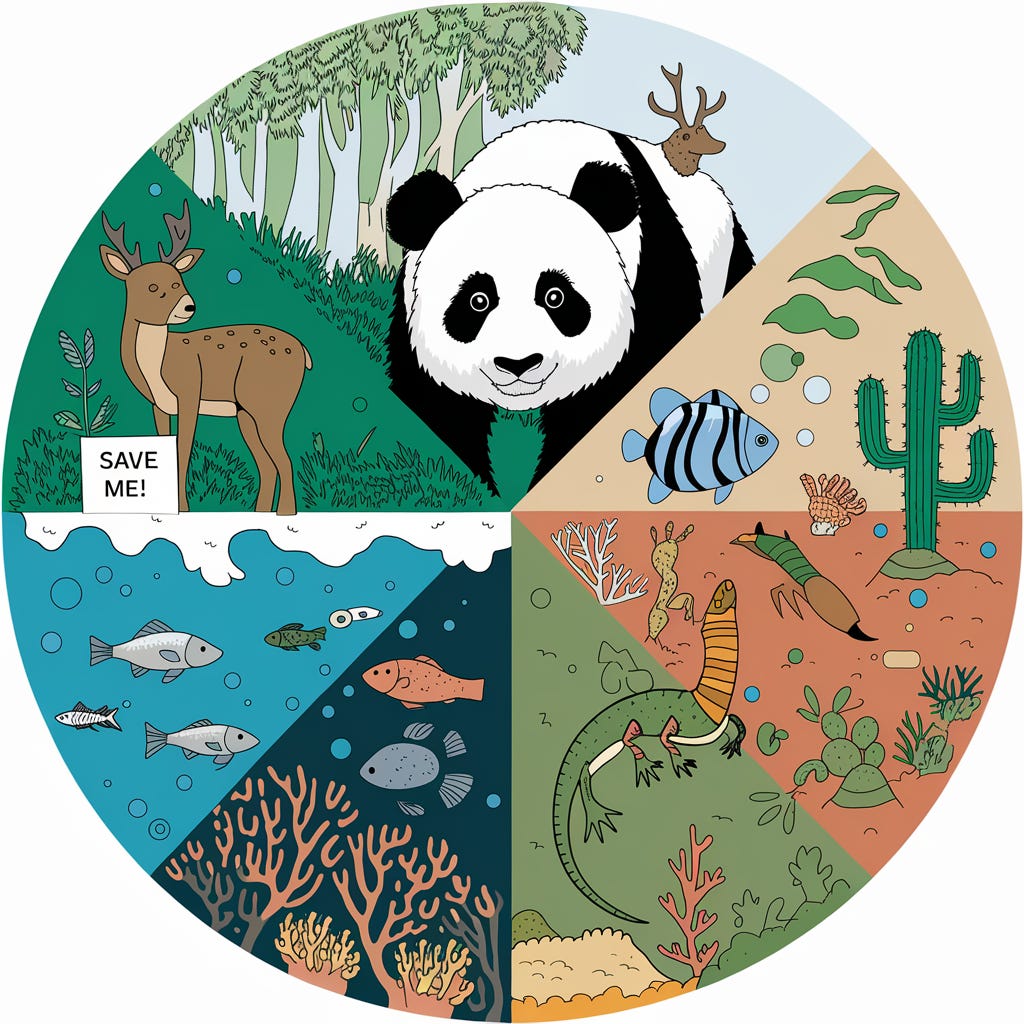
Subject: Biodiversity and Its Importance
Alignment with Standards:
- Next Generation Science Standards (NGSS):
- 4-LS1-1: Construct an argument that plants and animals have internal and external structures that function to support survival, growth, behavior, and reproduction (links to biodiversity supporting life).
- 3-LS4-4: Make a claim about the merit of a solution to a problem caused when the environment changes and the types of plants and animals that live there may change (extends to conservation).
- Common Core State Standards (CCSS):
- CCSS.ELA-LITERACY.RI.4.3: Explain events, procedures, ideas, or concepts in a historical, scientific, or technical text, including what happened and why, based on specific information in the text.
- CCSS.ELA-LITERACY.SL.4.1: Engage effectively in a range of collaborative conversations with diverse partners, building on others’ ideas and expressing their own clearly.
Objectives
- Understand biodiversity as the variety of life (plants, animals, ecosystems) on Earth.
- Explore why biodiversity is important for ecosystems and human life.
- Discuss endangered species and conservation efforts to protect biodiversity.
- Develop critical thinking and communication skills through discussions and reflections.
Materials
- Book or article about biodiversity (e.g., National Geographic Kids: Ultimate Explorer Field Guide—Animals or a kid-friendly website like WWF.org)
- Pictures or videos of ecosystems (e.g., forest, ocean) and endangered species (e.g., panda, tiger)
- Notebook or paper for notes/drawings
- Crayons, markers, or pencils
- Conservation poster supplies: paper, glue, scissors (optional)
- Optional: Globe, animal figurines, nature magazine
Activities
Day 1: Introduction to Biodiversity (45 minutes)
- Warm-Up (10 minutes):
- Ask: “How many different animals can you name? Plants? Why do we have so many?”
- Say: “Today, we’re learning about biodiversity—all the different living things!”
- Direct Instruction (15 minutes):
- Explain: “Biodiversity means variety—like animals, plants, and places they live (ecosystems).”
- Examples: Forest (trees, deer), Ocean (fish, coral), Desert (cacti, lizards).
- Why it matters: “Plants give oxygen, bees pollinate food, everything connects!”
- Show pictures: “Look at this forest—how many living things do you see?”
- Explain: “Biodiversity means variety—like animals, plants, and places they live (ecosystems).”
- Discussion (15 minutes):
- Read a page (e.g., “Coral reefs have tons of fish…”). Ask: “Why is variety good? What if all fish disappeared?”
- Wrap-Up (5 minutes):
- Assign: “Draw one ecosystem you like—add 3 living things!”
Day 2: Endangered Species (45 minutes)
- Review (10 minutes):
- Recap: “What’s biodiversity? Name one ecosystem and something in it!”
- Show their drawing: “What’s here?”
- Hands-On Activity: Endangered Discussion (25 minutes):
- Explain: “Some animals are endangered—there aren’t many left. Like pandas or sea turtles.”
- Show a video/picture (e.g., “Why Pandas Are Endangered”—5 min): “Why are they in trouble? (e.g., less bamboo, habitat loss)”
- Discuss:
- “What happens if pandas disappear? (Less bamboo eaters, forest changes.)”
- “Name another endangered animal—what’s its problem?” (e.g., tigers—hunting)
- Draw: “Pick an endangered animal. Show its home.”
- Wrap-Up (10 minutes):
- Ask: “Why do we care if animals go away? What’s one thing pandas need?”
Day 3: Conservation and Reflection (45 minutes)
- Warm-Up (10 minutes):
- Say: “What’s an endangered animal? How could we help it?”
- Hands-On Activity: Conservation Talk (25 minutes):
- Explain: “Conservation means protecting nature—like saving habitats or planting trees.”
- Examples: “Pandas get bamboo forests saved. Turtles get clean beaches.”
- Discuss: “What can we do? (e.g., recycle, save water)”
- Make a mini-poster: “Save the [animal]!” Draw it, write 2 ways to help (e.g., “Plant trees, stop trash”).
- Share: “Tell me your poster plan—why does it work?”
- Wrap-Up (10 minutes):
- Reflect: “How does biodiversity help us? What’s one conservation idea you’d try?”
Assessment
- Informal Observation: Note their understanding during discussions.
- Drawing: Check for an ecosystem or endangered animal with 2-3 features (e.g., forest with deer, trees).
- Poster: Look for an animal and 1-2 conservation ideas tied to biodiversity.
Extensions
- Nature walk: “What biodiversity do we see here?”
- Research: Pick an endangered species, find 3 facts online.
- Game: “What’s missing?” Remove an animal from an ecosystem—guess the impact.
High Level (Grade 6 to 8)
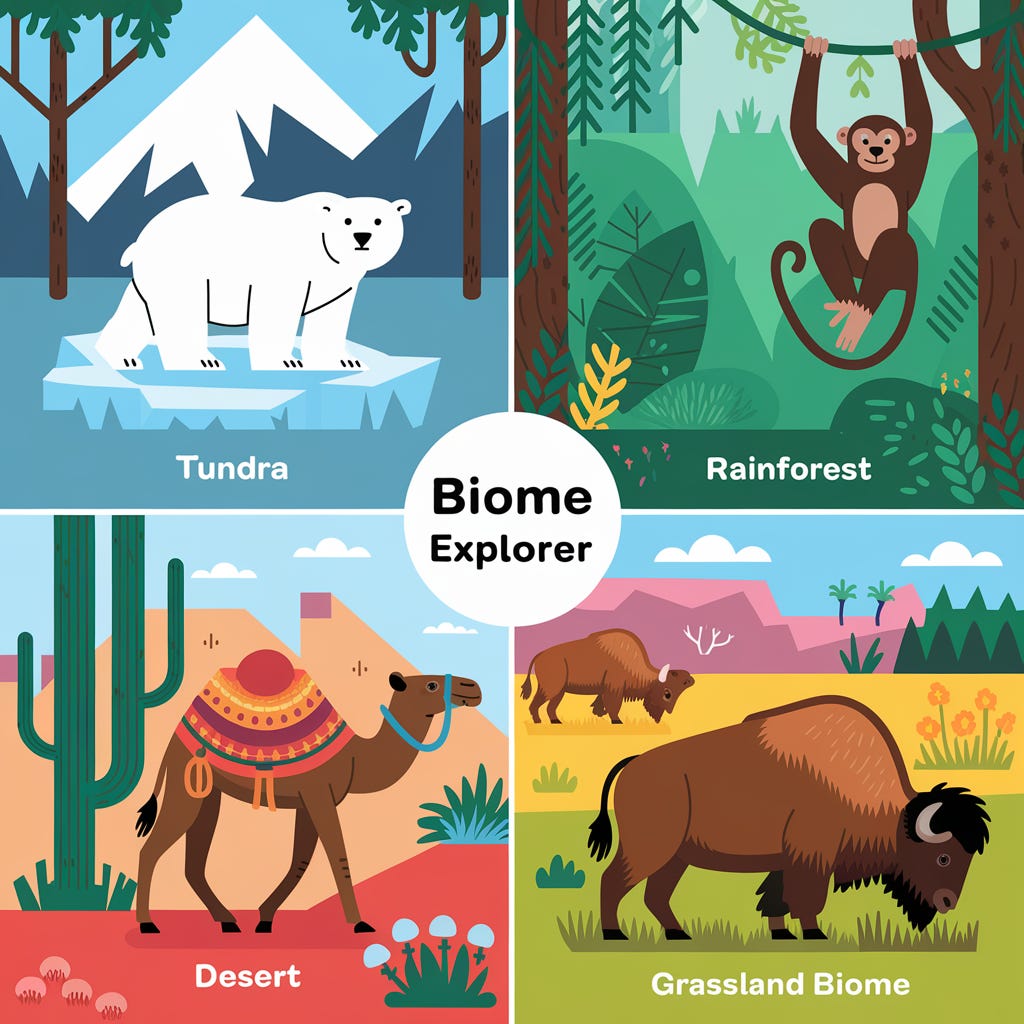
Subject: Ecosystems and Biomes
Alignment with Standards:
- Next Generation Science Standards (NGSS):
- MS-LS2-1: Analyze and interpret data to provide evidence for the effects of resource availability on organisms and populations of organisms in an ecosystem (links to biome characteristics).
- MS-LS2-4: Construct an argument supported by empirical evidence that changes to physical or biological components of an ecosystem affect populations (extends to biome diversity).
- Common Core State Standards (CCSS):
- CCSS.ELA-LITERACY.RST.6-8.7: Integrate quantitative or technical information expressed in words in a text with a version of that information expressed visually (e.g., in a flowchart, diagram, model, graph, or table).
- CCSS.ELA-LITERACY.WHST.6-8.7: Conduct short research projects to answer a question, drawing on several sources and generating additional related, focused questions for further research and investigation.
Objectives
- Understand the difference between ecosystems and biomes and identify major biome types.
- Explore the characteristics (climate, plants, animals) of specific biomes.
- Research a chosen biome and present findings on its features and inhabitants.
- Develop research, synthesis, and presentation skills through an in-depth study.
Materials
- Books or online resources (e.g., National Geographic: Biomes, Khan Academy, or kid-friendly sites like NOAA.gov)
- Notebook or paper for notes
- Pencil, pen, or markers
- Presentation supplies: poster board, index cards, or digital slides (e.g., Google Slides)
- World map or globe (to locate biomes)
- Optional: Biome pictures/videos (e.g., YouTube: “Tundra Explained”), craft supplies for visuals
Activities
Day 1: Introduction to Ecosystems and Biomes (45 minutes)
- Warm-Up (10 minutes):
- Ask: “What’s outside—trees, animals? That’s an ecosystem! What if it’s all snowy or sandy—what’s that?”
- Say: “We’re diving into ecosystems and biomes—big nature zones!”
- Direct Instruction (15 minutes):
- Explain:
- Ecosystem: Living things (plants, animals) and their environment interacting (e.g., a pond).
- Biome: Large areas with similar climate, plants, animals (e.g., desert, rainforest).
- List major biomes:
- Tundra: Cold, icy, few trees (polar bears).
- Forest: Trees, wet/dry (deer, oaks).
- Desert: Hot, dry (cacti, camels).
- Grassland: Grassy, open (bison).
- Rainforest: Wet, lush (monkeys, ferns).
- Aquatic: Water-based (fish, coral).
- Show on a map: “Rainforests near the equator, tundra up north!”
- Explain:
- Discussion (15 minutes):
- Watch a short clip (e.g., “What’s a Biome?”—5 min): “What’s one biome you saw?”
- Wrap-Up (5 minutes):
- Assign: “Pick a biome to research—tell me tomorrow!”
Day 2: Biome Research (45 minutes)
- Review (10 minutes):
- Recap: “What’s a biome? Name one and something in it!”
- Ask: “Which biome did you pick? Why?”
- Hands-On Activity: Research Time (25 minutes):
- Research their biome using books/sites:
- Location (e.g., Sahara Desert—Africa).
- Climate (e.g., hot, dry).
- Plants (e.g., cacti).
- Animals (e.g., lizards, camels).
- Fun fact (e.g., “Camels store fat in humps!”).
- Write notes: “Desert: Hot, sandy. Cacti grow, camels roam. Almost no rain.”
- Sketch or print 1-2 images (e.g., cactus, camel).
- Research their biome using books/sites:
- Wrap-Up (10 minutes):
- Share: “Tell me one thing about your biome! What’s surprising?”
Day 3: Presentation Creation and Sharing (45 minutes)
- Warm-Up (10 minutes):
- Ask: “What’s one fact you found? Practice saying it loud!”
- Hands-On Activity: Present Findings (25 minutes):
- Create a presentation:
- Poster: Draw biome, add 5 facts (e.g., “Tundra: Cold, snowy. Polar bears hunt seals.”).
- Cards: One fact per card, with a picture.
- Slides: Simple digital layout (if tech-savvy).
- Present to family or you: “My biome is the rainforest. It’s wet and warm. Monkeys swing, and trees are huge…” (3-5 min).
- Use the map: “It’s here—near South America!”
- Create a presentation:
- Wrap-Up (10 minutes):
- Discuss: “What’s cool about their biome? How’s it different from ours?”
Assessment
- Informal Observation: Note their understanding during discussions and research.
- Research Notes: Check for location, climate, 2 plants/animals, and a fact.
- Presentation: Look for 4-5 clear characteristics with a visual or map tie-in.
Extensions
- Biome compare: “How’s a desert different from a rainforest?”
- Video dive: Watch a biome documentary (e.g., BBC Earth), add a fact.
- Design an animal: “What lives in your biome? Draw it with adaptations!”

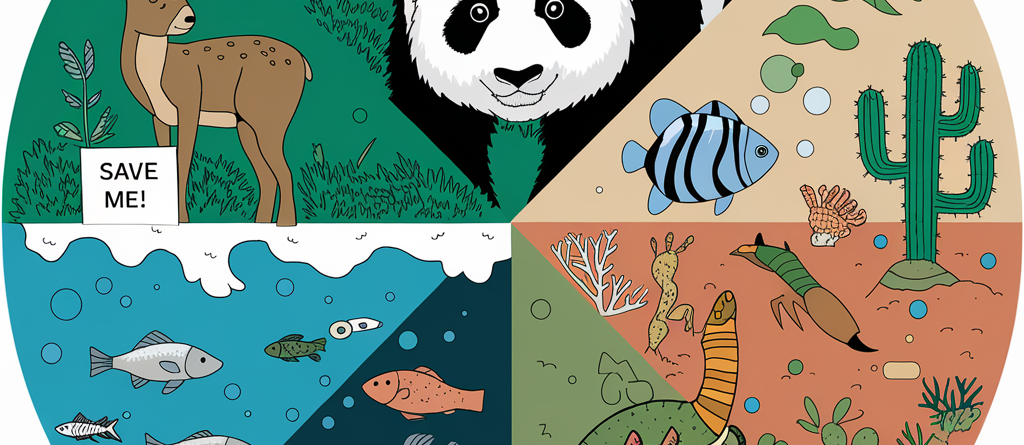

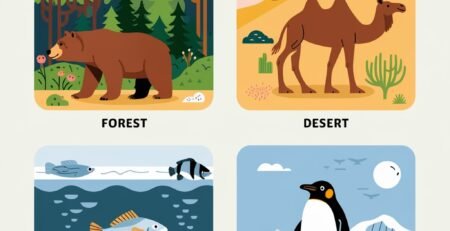

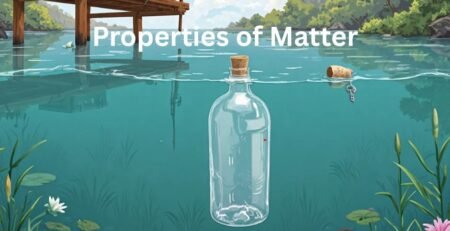






LEAVE A COMMENT